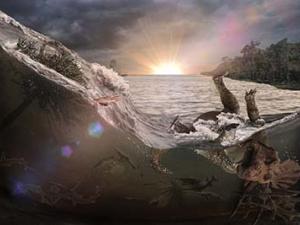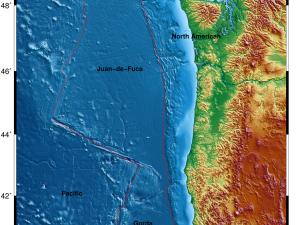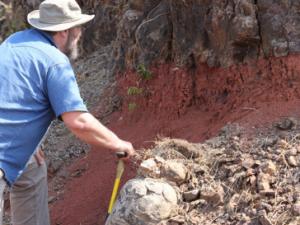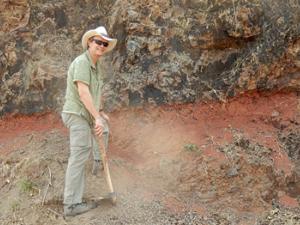

Research Bio
Mark Richards is Professor Emeritus in the Department of Earth & Planetary Science. His current research involves mantle convection and large-scale dynamics of the Earth’s interior; Internal dynamics of Venus, Mars, and the Moon; Rotational dynamics and gravity fields of the terrestrial planets; History and dynamics of global plate motions; Computational geophysics; Igneous processes in the mantle and large-scale volcanism; Geological evolution of the Galápagos Archipelago and ridge system; Tectonics and dynamics of the Andean continental margin; Geological causes of mass extinction.
In the News
66 million-year-old deathbed linked to dinosaur-killing meteor
Minority Ph.D. students in STEM fare better with clear expectations, acceptance
Scientists map source of Northwest’s next big quake
A large team of scientists has nearly completed the first map of the mantle under the tectonic plate that is colliding with the Pacific Northwest and putting Seattle, Portland and Vancouver at risk of the largest earthquakes and tsunamis in the world.
Asteroid impact, volcanism were one-two punch for dinosaurs
UC Berkeley geologists have uncovered compelling evidence that an asteroid impact on Earth 66 million years ago accelerated the eruptions of volcanoes in India for hundreds of thousands of years, and that together these planet-wide catastrophes caused the extinction of many land and marine animals, including the dinosaurs.
Did Dinosaur-Killing Asteroid Trigger Largest Lava Flows on Earth?
The asteroid that slammed into the ocean off Mexico 66 million years ago and killed off the dinosaurs probably rang the Earth like a bell, triggering volcanic eruptions around the globe, according to a team of UC Berkeley geophysicists. The impact may have re-ignited the eruptions at the Deccan Traps, initiating the largest lava flows on Earth.
Berkeley, Stanford, UCLA, Caltech boost number of minorities
The California Alliance, led by UC Berkeley, is setting a new course for diversifying the postdoctoral and faculty ranks at top-tier research universities nationwide.
Simons Foundation awards UC Berkeley $60 million for theory of computing institute
The Simons Foundation has awarded a landmark $60 million grant to UC Berkeley to establish a theory of computing institute that promises to catalyze new advances in broad disciplines that affect our everyday lives, from how we spend our money to how we fight disease.







